Coolant drain
Attention! The coolant is changed on a cold engine. Avoid getting coolant on painted body surfaces and clothing. Otherwise, wash the area where the coolant has entered with plenty of water.
Removing the cover from the expansion tank
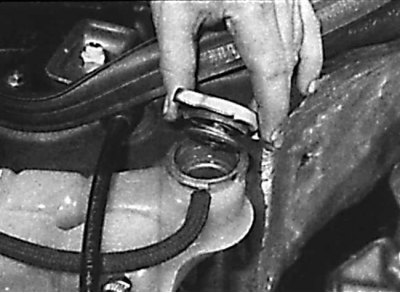
Location of the drain tip for draining the coolant
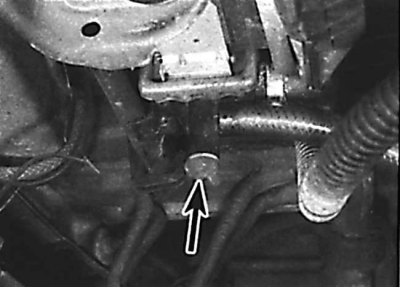
Location of the coolant drain plug from the engine block
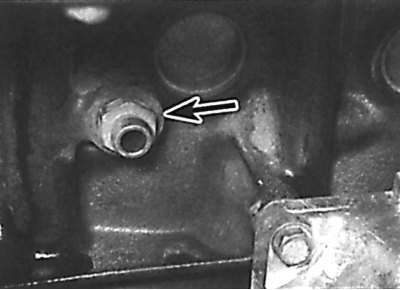
1. Remove cap from expansion tank (see fig. Removing the cover from the expansion tank).
2. Install a suitable container under the radiator and put a rubber hose on the drain tip (see fig. Location of the drain tip for draining the coolant). Using a large screwdriver, open the drain plug located under the tip and drain the coolant through the hose into a container.
3. Place a suitable container under the engine block drain plug, which is located on the right front side of the engine block (see fig. Location of the coolant drain plug from the engine block). Open the drain plug by turning it with a wrench and drain the coolant from the engine block.
4. After draining the coolant, remove the drain hose and close the plugs on the radiator and cylinder block.
Flushing the cooling system
The coolant must be changed periodically, and the cooling system must be flushed, as rust and dirt form in the channels of the system.
The radiator must be flushed regardless of the engine.
Flushing the radiator
1. Disconnect the hoses from the radiator.
2. Insert the hose into the inlet of the upper radiator tank, turn on the water and flush the radiator until clean water appears from the lower radiator tank.
3. If it is not possible to flush the radiator with clean water, then use a detergent.
Engine flush
1. Remove the thermostat and temporarily install the thermostat cover.
2. Disconnect the hoses from the radiator and feed a clean water stream through the hose into the engine block through the upper radiator hose and flush it until clean water emerges from the lower hose leading to the radiator.
3. Install the thermostat and connect the cooling system hoses.
Filling the cooling system
Pouring water into the expansion tank
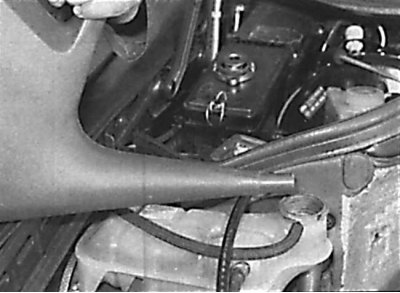
If the coolant was replaced, first fill the expansion tank with 2 liters of water.
Filling antifreeze concentrate
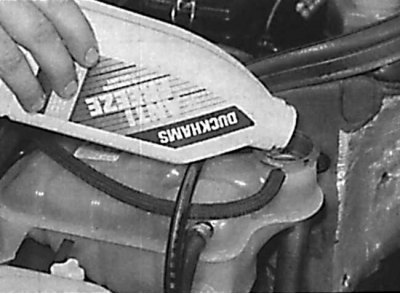
Next, fill in the required amount of antifreeze concentrate and clean water until the level reaches the max mark on the expansion tank.
1. Before filling the cooling system, check that all hoses and clamps are in good condition. Note that the antifreeze mixture must be used all year round to prevent corrosion.
2. Remove the cap from the expansion tank.
3. Slowly fill in the coolant until the level reaches the max mark on the expansion tank.
4. If the coolant was replaced, first pour 2 liters of clean water into the expansion tank, then fill in the required amount of antifreeze concentrate and the rest of the water (see fig. Pouring water into the expansion tank, Pouring antifreeze concentrate).
5. To remove air from the cooling system, squeeze the upper and lower radiator hoses. After removing the air, add coolant to the max mark on the expansion tank and install the plug.
6. Start the engine and warm it up to operating temperature.
7. Stop the engine and cool it down, then check the coolant level.
Antifreeze
Antifreeze is a mixture of distilled water and ethylene glycol concentrate. Antifreeze protects the cooling system from corrosion and increases the boiling point of the coolant. The amount of ethylene glycol in antifreeze depends on the weather conditions of the car and ranges from 40 to 70%.
